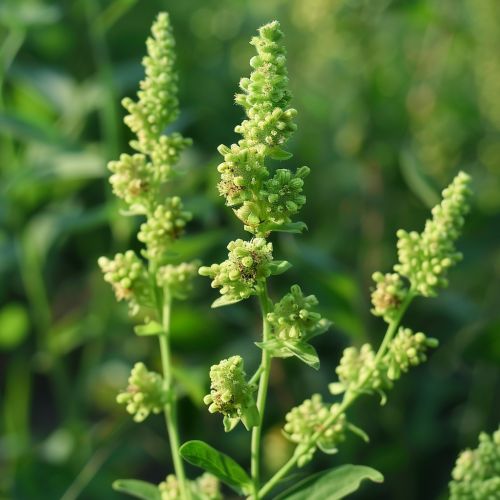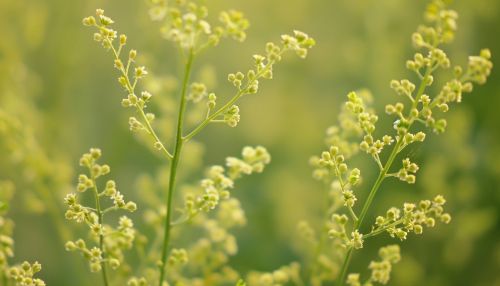Ragweed
Introduction
Ragweed, scientifically known as Ambrosia, is a large genus of flowering plants in the aster family, Asteraceae. There are about 50 species of ragweed around the world, most of which are native to North America. Ragweed is an annual plant that is well known for its role in causing allergic reactions in humans, particularly hay fever.


Description
Ragweed plants are typically erect and range in height from a few inches to over 12 feet. They have slender, green stems that are covered in rough hair. The leaves are arranged alternately along the stem and are usually deeply lobed, giving them a ragged appearance, which is how the plant got its name. The flowers of ragweed are small and greenish, and they grow in spikes at the tops of the stems. Each flower produces a large amount of pollen, which is carried by the wind to other plants for fertilization.
Distribution and Habitat
Ragweed is native to North America but has spread to many other parts of the world, including Europe, Asia, and Australia. It is most commonly found in disturbed areas, such as roadsides, fields, and waste places, but it can also grow in a variety of other habitats, including forests, grasslands, and wetlands.
Life Cycle
Ragweed is an annual plant, which means it completes its entire life cycle in one year. It germinates in the spring, grows and matures throughout the summer, and then produces flowers and seeds in the late summer and fall. After the seeds are dispersed, the plant dies. The seeds can remain dormant in the soil for many years before germinating.
Pollen Production and Allergies
One of the most significant aspects of ragweed is its role in causing allergies. Each ragweed plant can produce up to a billion grains of pollen per season, and this pollen is one of the most common causes of hay fever, a type of allergic rhinitis. When people who are allergic to ragweed pollen inhale it, their immune system reacts by releasing histamines, which cause symptoms such as sneezing, runny nose, itchy eyes, and throat irritation.
Control and Management
Controlling ragweed can be challenging due to its high reproductive capacity and the long dormancy of its seeds. However, several methods can be used to manage ragweed populations, including mechanical control (such as mowing or hand-pulling), chemical control (using herbicides), and biological control (using insects or diseases that attack ragweed). It is also important to prevent the spread of ragweed by cleaning equipment and clothing that may have come into contact with the plant or its seeds.
Economic Impact
Ragweed has significant economic impacts due to its effects on human health and agriculture. The cost of treating ragweed allergies is estimated to be billions of dollars each year. In addition, ragweed can reduce crop yields by competing with crop plants for resources, and its pollen can contaminate crops and reduce their quality.
